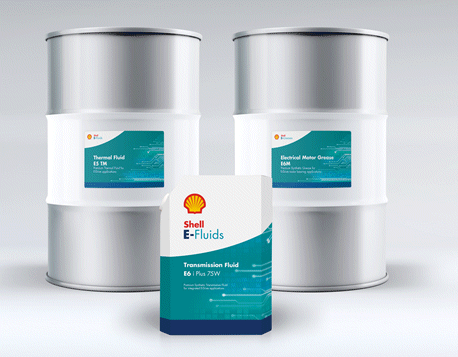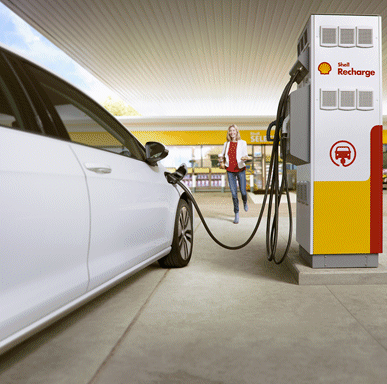Carol Chen, Global Lubricants Marketing VP at energy giant Shell, has a simple way of driving home the point that the future is about electric mobility. “I start conversations with three numbers: two billion, double, and 50%. The 2 billion refers to how much the world’s population could grow to by 2050, according to the UN . That’s a significant increase in population. Double refers to the predicted increase in car parc according to the World Economic Forum by 2045, so the number of cars on the roads will increase. By 50%, I mean that according to Shell’s latest scenario, Sky, 1 in every 2 cars sold by 2030 could be an EV.” So where does Shell see itself in this evolving ecosystem?
In fact, Shell, the world’s leading global lubricants supplier for the last 12 years, has been at the forefront of driving this ecosystem and pushing it towards a cleaner, more sustainable future. As it seeks to continue its leadership role, Shell will look to five key elements to form the bedrock of its vison for the future: technology leadership, sustainability, collaboration, digitalisation, and customer focus.
To learn more about these plans, we spoke with Carol Chen. Here are some key insights offered by her into Shell’s roadmap for the future:

- Technology Leadership
“At Shell, it is no longer about launching a product; instead, it is about launching a product that pushes performance, while reducing emissions and driving fuel efficiency.”
One of the questions we are motivated to answer is—regardless of whether our customers are driving an ICE, hybrid or EV— how can Shell deliver a driving experience with the highest performance but with optimal fuel efficiency? For example, one of the lubricant products we are pushing for current ICE cars is 0W, based on our pioneering gas to liquid (GTL) technology. 0W delivers high performance compared to competing offerings, supporting an average improvement of 3-4% in fuel efficiency. In other words, it enables improved vehicle performance even while reducing their emissions.
Another example is in the area of trucks where our lead lubricant brand Rimula is designed to optimise fuel efficiency for trucks. We have worked with one of our fleet customers, Van der Lee, to improve their fuel efficiency by 2.1%. This is substantial, especially when you translate this into the nearly 250 metric tonnes of C02 emissions that can be saved every year.
Our newly launched e-fluids product is another example of Shell’s technology leadership. If you think about EVs, everything is sealed so there is only one chance to get the product right, which is why the first fill is so critical. Our engineered e-fluids are designed to provide thermal/corrosion/friction protection, supporting the highest levels of performance in extremely demanding environments. Together, with our e-thermal fluids and e-greases, all our e-mobility focused products have been developed to boost vehicle performance, efficiency, range and lifespans.
In addition to e-fluids, Shell has also invested substantial effort and energy towards e-charging. It is one thing to develop an EV but once that happens, it needs to be charged. Accordingly, one of the things Shell has done is to acquire New Motion and, more recently, Greenlots. We are also developing our own retail recharging, fast charging solution. Through these acquisitions and our own development efforts, we are working to create an ecosystem that will provide fast charging on the go, at home and at work, and that will enable the EV driving experience to be as easy and convenient as possible.
Importantly, our e-charging solution, Shell Recharge in the UK returns to the idea of sustainability and lower emissions deriving from renewable energy. This is about ensuring that when we provide a charging solution, we look at it from end-to-end. It is also about doing the right thing, and in the UK our Shell Recharge charging posts use renewable energy, since we believe it is crucial to supporting a charging solution which, in its totality, has lower emissions.
- Sustainability
“There’s a list of areas in the organisation where the leadership wants us to ensure that sustainability is not just a concept floating on paper, it’s a number that’s actually embedded in our scorecard and our actions.”
A dedicated AJA team was formed at the beginning of this year to look at sustainable packaging because this is not an easy task to crack. The team has already identified a series of actions, some of which are in the process of being implemented, that will result in a low single digit reduction of CO2 from packaging this year. The challenge here will be to see what other bold actions, choices or collaborations we can make to take this up to the next level. For example, we know that 0W is driving very high fuel efficiency. So from last year, we have been focusing on how fast we can grow 0W. As a result of our efforts, 0W in the passenger vehicle area this year has been growing in the high digital double digits as well as in other areas.
From an organisational standpoint, Shell has an ambition to cut the Net Carbon Footprint of the energy products that it sells around the world by around half by 2050. Secondly, deliverables, KPIs, and measures across Shell companies are now geared to promote sustainability. There’s a list of areas in the organisation where the leadership wants to ensure that sustainability is not just a concept floating on paper, it’s a number that’s actually embedded in our scorecard and our actions. We know it’s not easy but we are aware it’s critical and so we want to see how we can embed this idea, starting from the leadership and then all the way down to the organisation. And finally, Shell has announced that from this year onwards our our short-term targets for reducing Net Carbon Footprint of the energy products we sell will be linked to our executive remuneration. That’s very bold; compensation linked to sustainability is no longer talk, it’s serious.
We really need to encourage organisations to think differently and as they begin to think differently, they will realise that they are not doing sustainability for the sake of being able to say that they are but, instead, to see how they can give their customers the best tools they require to improve their driving experience/performance and, at the same time, reduce carbon emissions. These two things ideally go hand in hand.
- Collaboration
“We have been, and will continue to drive, very close collaborations with leading OEMS because that is the way forward. Moreover, when we think of sustainable solutions, there are actually several areas where we are actively looking for collaborations because we realise that no single company can move the needle by itself.”
We are constantly thinking of how we can partner with leading OEMs and component suppliers to facilitate the transition to e-mobility. We are currently working with multiple leading OEMS for e-fluids co-development because both e-fluids and EVs go together. We will continue to leverage our technology leadership and work with OEMs to help them overcome the design and engineering challenges that will inevitably emerge as the next generation of EVs is developed. We have also started collaborating with OEMs on next generation cooling technology for EV batteries since this will be one of the most difficult challenges we will face in the future.
We have been, and will continue to drive, very close collaborations with leading OEMS because that is the way forward. Moreover, when we think of sustainable solutions, there are actually several areas where we are actively looking for collaborations because we realise that no single company can move the needle by itself. One example is packaging. Many companies want 100% of their packaging to be sustainable or recyclable. This is easier said than done. So this is one area where we have actively been reaching out to different companies, suppliers, vendors and even start-ups.
- Digitalisation
“Digital has become a huge enabler. It is allowing us to think differently about our businesses and our business models.”
Digital is a big word and we believe it could be a solution to enable new business models and new revenue models. There is also a third dimension in which digital— in a very personalised, targeted and scalable manner—is disrupting the way we reach the consumer/customer. Nowadays, everybody is being bombarded by information. The question here is how can digital play a role in terms of helping companies give the right information to the right customer at the right time, and with the right offer at the right value, trigger the right action? So we are looking at digital in terms of how it can uniquely and tangibly add value, making sure it’s not consigned to being just a big bubble word.
Even some of the best consumer goods companies in the world today are going through exactly the same journey. Today, the job of marketing is no longer about selling, it is about serving the customer in ways that add value. Digital has become a huge enabler. This was not possible 15 years ago but it is possible now. It is allowing us to think differently about our businesses and our business models.
- Customer Focus
“The future will be about what the customer wants, about how to create that experience along the journey, and how we can anticipate and create that ecosystem by providing the right experience at the right time.”
In general, end consumers are looking for a brand, like Shell, that they trust. A part of winning deals is about whether a company/brand brings in a sense of credibility, reputation and trust. If you look through the lens of a customer/consumer, that trust in a brand will continue. In this context, we are in a really good position to leverage our status as a long-standing no.1 brand. In addition to trust, the second factor centres on whether your product enables the best driving experience for customers? Here, we are talking about the whole ecosystem, including charging, that we are trying to build with EVs. That marks a big shift for Shell. Our CEO talked about it publicly, saying that we will be moving more and more, especially Downstream, towards a customer-centric business. That is, if our customers are looking for a delightful, easy and convenient EV driving experience, then what is our role in terms of leveraging technology, brand, and collaboration to enable such an experience and how can we eventually make our offering “irresistible” to them?
That is the direction in which we are headed. The future is no longer about manufacturing a product and then selling it. That era is gone. The future will be about what the customer wants, how to create that experience along the journey, and how we can anticipate and create that ecosystem by providing the right experience at the right time.
[1] https://www.un.org/development/desa/en/news/population/world-population-prospects-2019.html
[2] https://www.weforum.org/agenda/2016/04/the-number-of-cars-worldwide-is-set-to-double-by-2040





